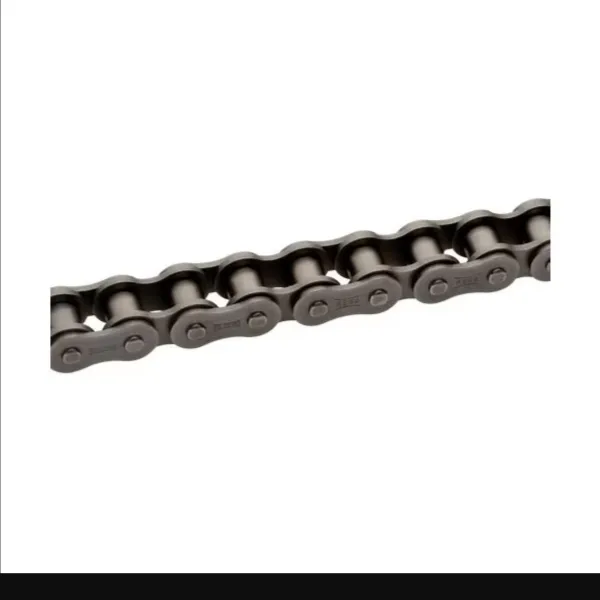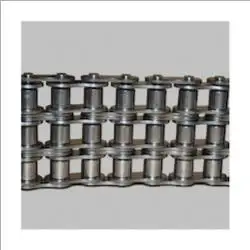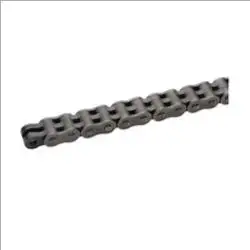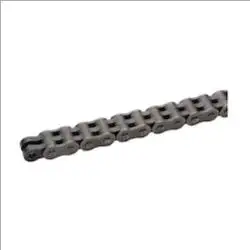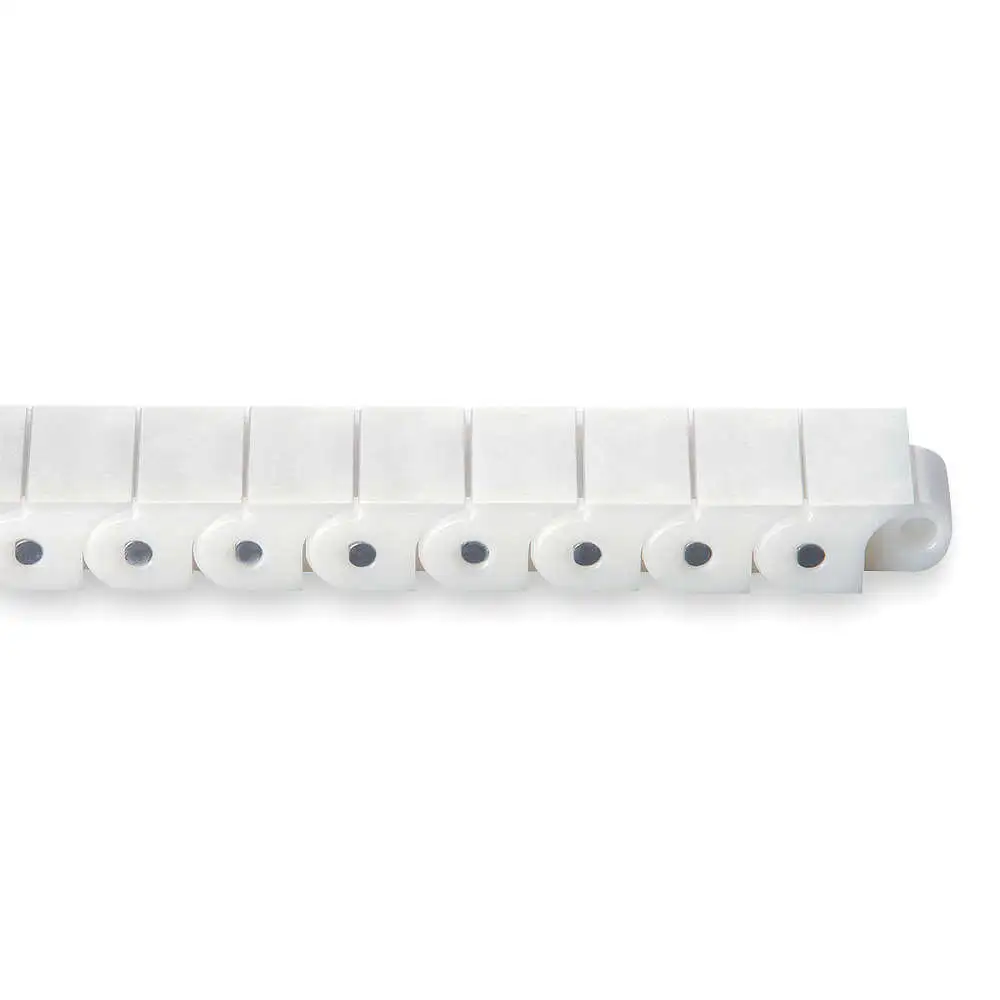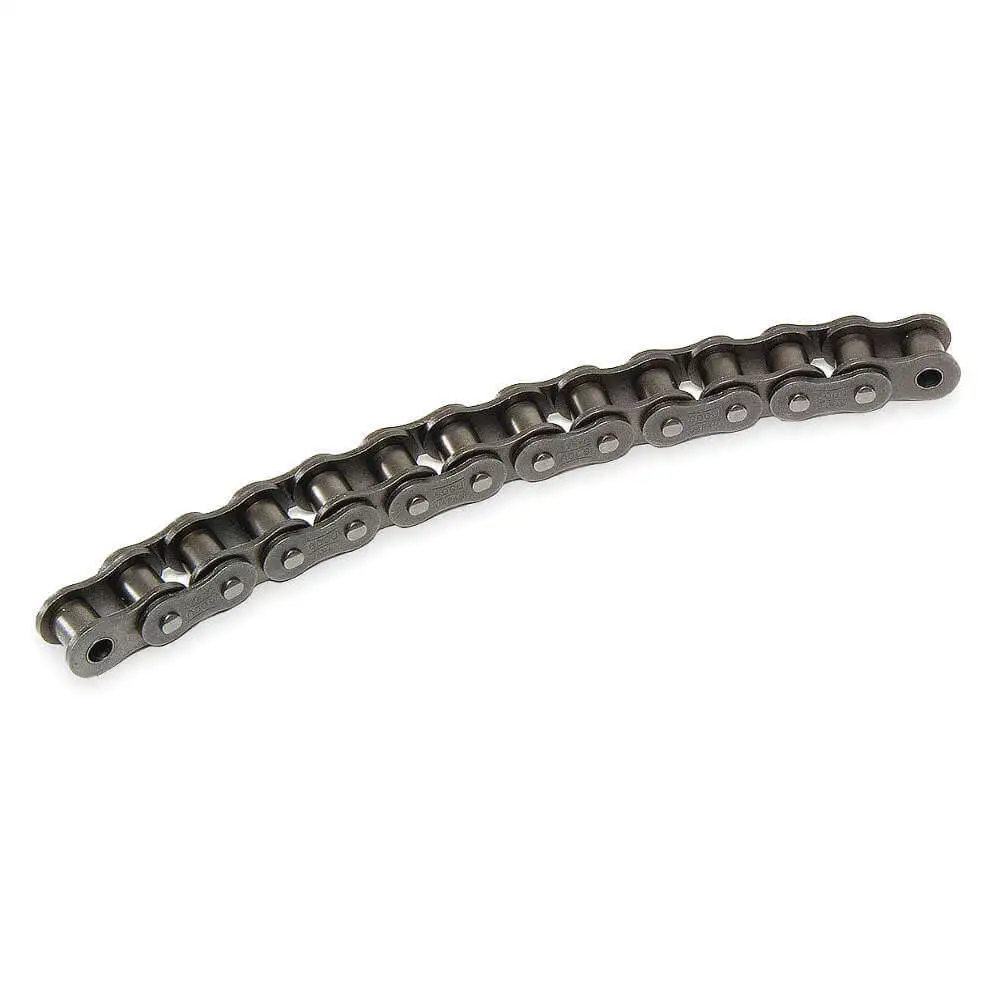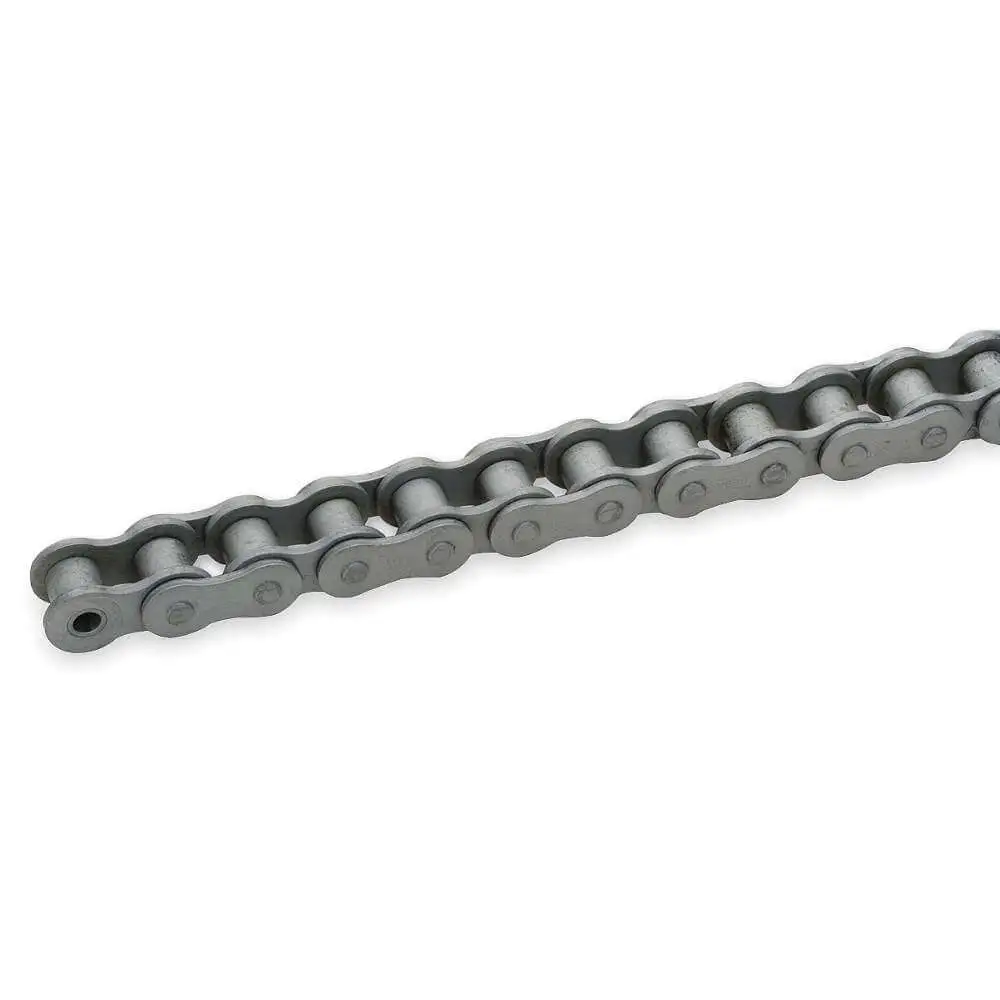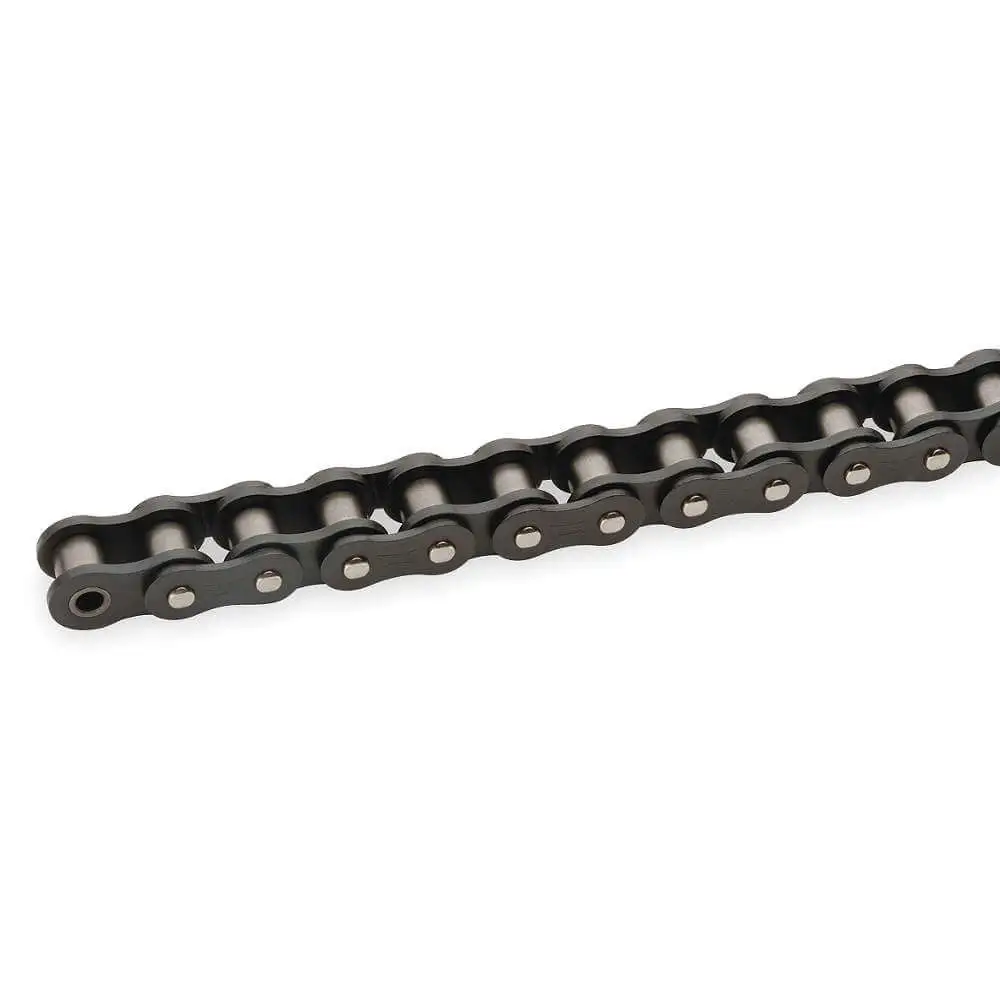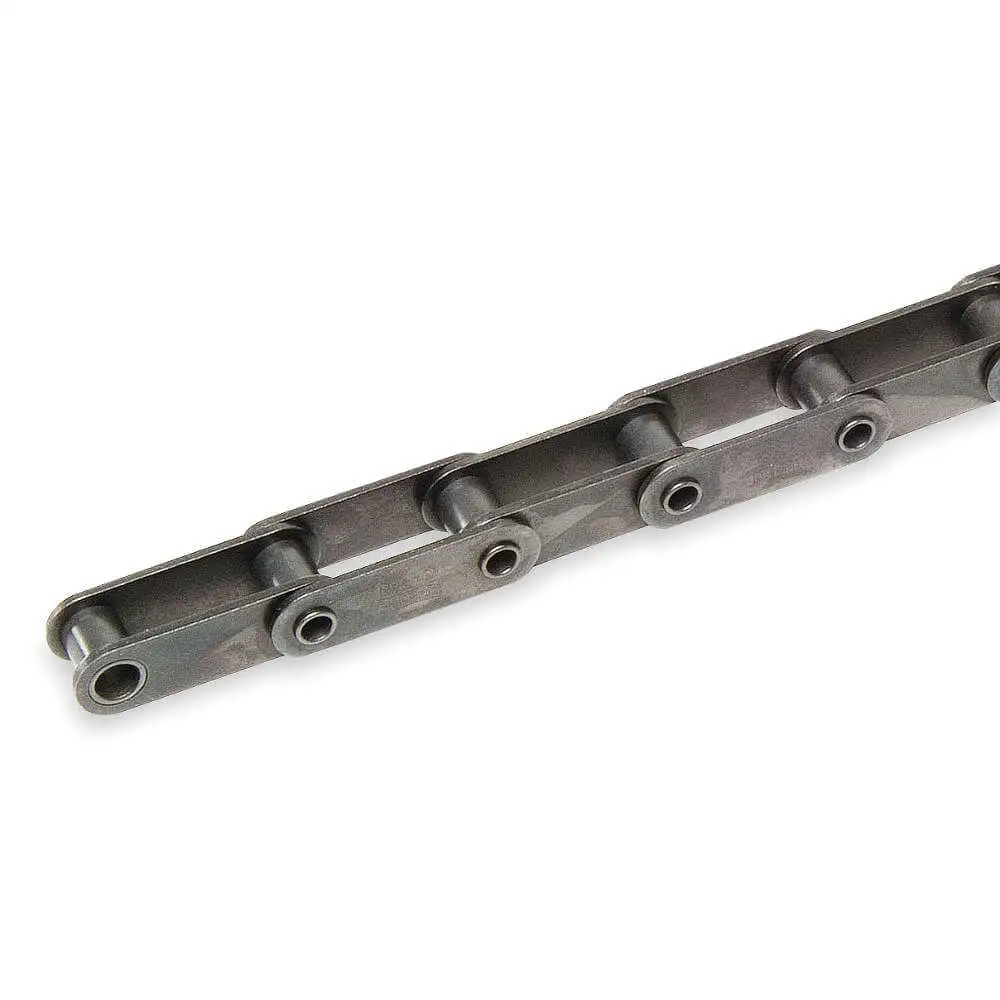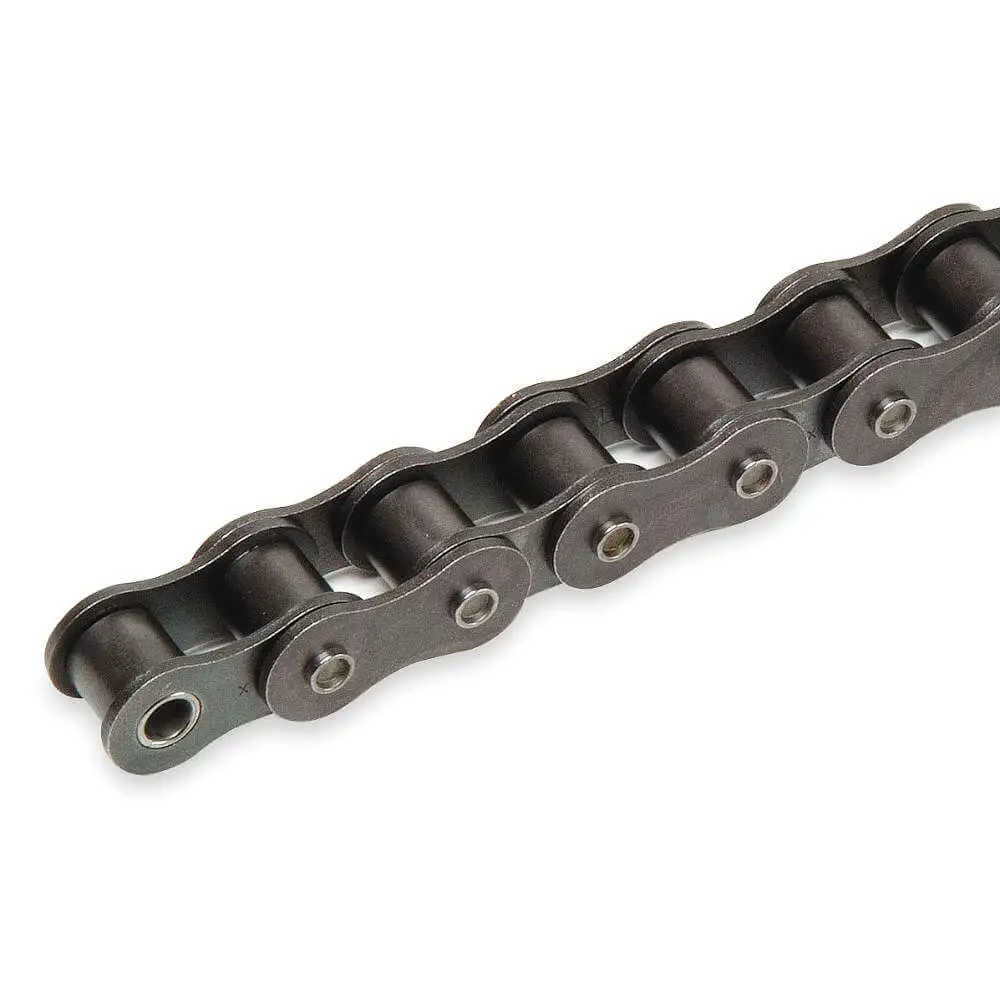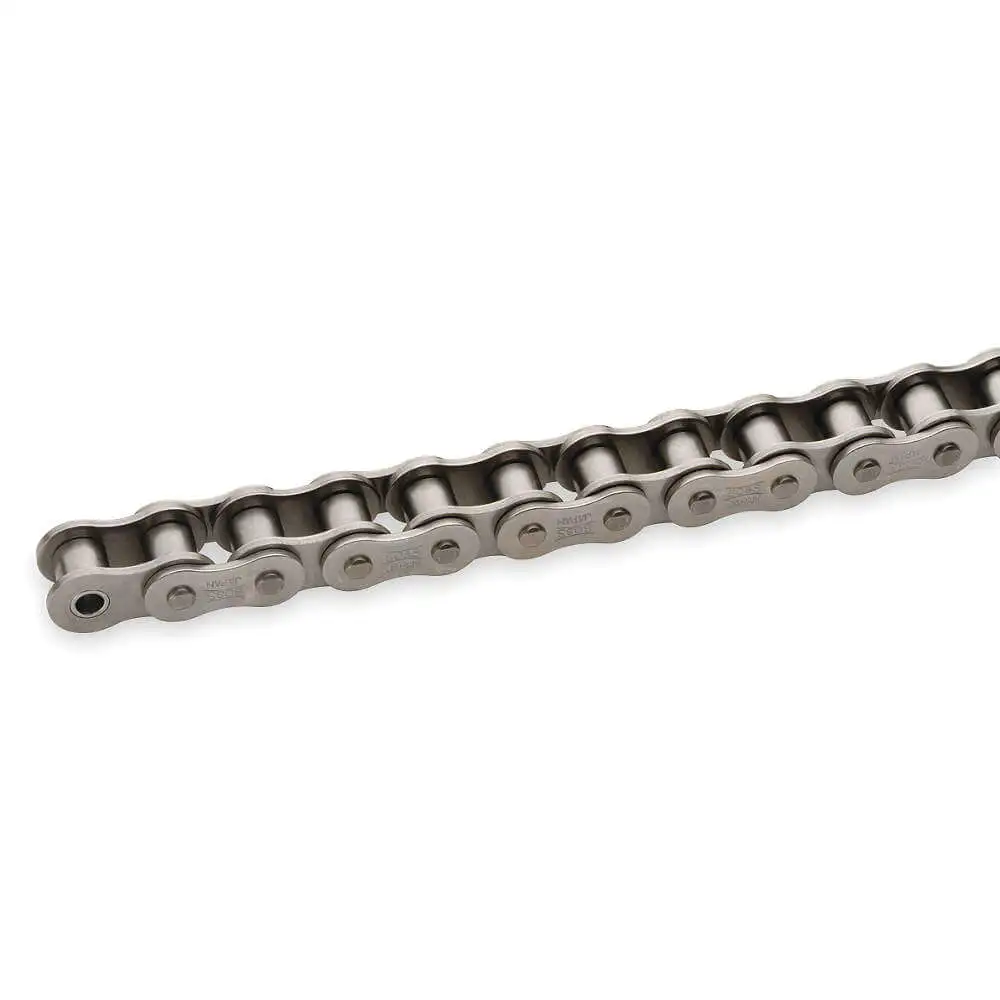Frequently Asked Questions
What are the key considerations when selecting conveyor chains for a specific application?
When choosing conveyor chains, evaluate the load capacity, speed, operating environment (temperature, moisture, corrosive agents) and required maintenance intervals.
How do Tsubaki chains support automation and Industry 4.0 initiatives?
Tsubaki chains allow reliable power transmission and motion control solutions for conveyor systems, robotics and automated assembly lines. Integration of roller chains with sensor technology and data monitoring systems can enable real-time performance tracking and predictive maintenance.
What are roller chains?
Roller chains consist of interconnected links with cylindrical rollers that engage with sprockets to transmit power between rotating shafts. These mechanical devices transfer motion and torque from one shaft to another efficiently.
What are the common causes of roller chain failure?
Roller chains fail due to inadequate lubrication, overloading, improper tensioning, wear & elongation, contamination, corrosion and misalignment. Regular maintenance and proper chain management practices can help prevent chain failure.
What are lifting chains?
Lifting chains are designed for hoisting and lifting heavy loads in construction, manufacturing, mining and maritime operations. They are employed with lifting devices, such as cranes, hoists and winches.
What are the essential accessories required for overhead lifting operations?
Essential accessories for overhead lifting include lifting slings, shackles, hooks, lifting beams, spreader bars and rigging hardware (eyebolts, turnbuckles and swivels).
 £ GBPChange Country
£ GBPChange Country